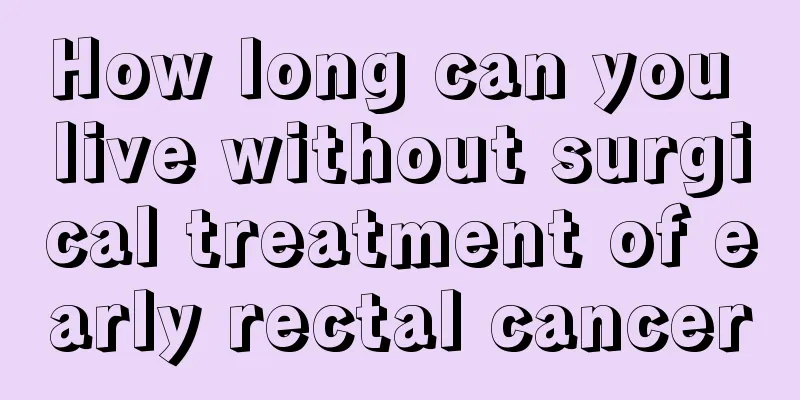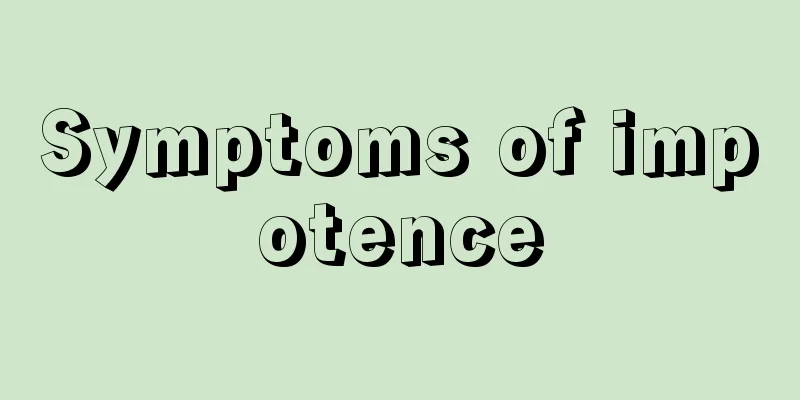What is the treatment for cerebral hemorrhage and convulsions?

|
Cerebral hemorrhage is a long-standing disease in life. There are many causes of cerebral hemorrhage. It is likely to be caused by brain congestion or complications after certain surgeries. If cerebral hemorrhage causes convulsions, it is likely to be secondary epilepsy, which requires timely treatment. Cerebral hemorrhage is very difficult to treat, but as long as you take good care of yourself, you can recover. Patients with cerebral hemorrhage generally need to rest. What are the factors that cause sequelae of cerebral hemorrhage in daily life? 1. It is more common in winter and autumn than in summer. This is because the weather is cold in winter, blood vessels constrict and blood pressure rises. In summer, the weather turns hotter, blood vessels dilate, and blood pressure drops. However, heatstroke and increased sweating in summer can also trigger the sequelae of cerebral hemorrhage. 2. Emotional excitement can also cause a sudden rise in blood pressure and cause sequelae of cerebral hemorrhage. 3. Excessive fatigue and excessive exertion can cause high blood pressure, which may lead to sequelae of cerebral hemorrhage. 4. Overeating and eating too much greasy food can increase the lipids in the blood, accelerate blood circulation, and suddenly increase blood pressure, which can lead to sequelae of cerebral hemorrhage. Generally, a cerebral hemorrhage causes varying degrees of brain tissue damage and brain dysfunction, and despite treatment, varying degrees of sequelae remain. This is related to the following factors: (l) The amount of bleeding directly affects the severity of clinical symptoms. Patients with intrahemispheric bleeding of more than 25 ml often have sequelae. It is not difficult to understand that the more bleeding there is, the more serious the sequelae will be. (2) Location of bleeding: Bleeding in different locations can cause different degrees of brain damage. For example, bleeding in the basal ganglia often leaves severe limb dysfunction, while bleeding in the brainstem with a small lesion can often cause death. Cerebellar hemorrhage can cause symptoms such as limb numbness and unsteady walking. Bleeding or bleeding sites in non-functional areas (i.e., quiet areas) do not affect motor and sensory pathways, so there is no neurological impairment. In some patients, the motor and sensory pathways have been affected by edema and compression of the lesions, but in fact the pathways are not damaged. After treatment, the edema is eliminated, the compressive effects are relieved, and the functions are restored. Therefore, the site of bleeding is related to prognosis. (3) Treatment and care during the recovery period should first be determined to be related to sequelae, but the severity of sequelae mainly depends on the size and location of the disease and whether the acute treatment measures are appropriate. Treatment for cerebral hemorrhage is as follows: 1. Generally, you should rest in bed for 2 to 4 weeks, keep quiet, and avoid emotional excitement and high blood pressure. Closely observe vital signs such as temperature, pulse, respiration and blood pressure, and pay attention to pupil changes and changes in consciousness. 2. Keep the airway open and clear respiratory secretions or inhale. If necessary, perform tracheal intubation or endotracheal intubation in time. For those with impaired consciousness or gastrointestinal bleeding, fast for 24 to 48 hours and empty the stomach contents if necessary. 3. Water, electrolyte balance and nutrition. The daily fluid intake can be calculated as urine volume + 500 ml. If there is high fever, sweating, or vomiting, maintain the central venous pressure at 5-12 mmHg or the pulmonary wedge pressure at 10-14 mmHg. Be careful to prevent hyponatremia so as not to aggravate cerebral edema. Supplement sodium, potassium, carbohydrates and calories every day. 4. Adjust blood sugar. If blood sugar is too high or too low, it should be corrected in time to maintain the blood sugar level between 6 and 9 mmol/L. 5. For those with obvious headaches and excessive irritability, sedatives and analgesics may be given as appropriate; those with constipation may use laxatives. 6. Reduce intracranial pressure. Brain edema after cerebral hemorrhage reaches a peak in about 48 hours, lasts for 3 to 5 days, and then gradually subsides, and may last for 2 to 3 weeks or longer. Cerebral edema can increase intracranial pressure and cause brain herniation, which is the main factor affecting the mortality and functional recovery of cerebral hemorrhage. Actively controlling cerebral edema and reducing intracranial pressure are important parts of the acute treatment of cerebral hemorrhage. 7. Generally speaking, when the patient's condition is serious and the intracranial pressure is too high and conservative medical treatment is ineffective, surgical treatment should be performed in a timely manner. 8. Rehabilitation treatment: After cerebral hemorrhage, as long as the patient's vital signs are stable and the condition is no longer progressing, rehabilitation treatment should be started as soon as possible. Early staged comprehensive rehabilitation treatment is beneficial to restoring patients' neurological function and improving their quality of life. Rehabilitation therapy is crucial to the recovery prognosis of patients with cerebral hemorrhage. Active rehabilitation therapy will produce better prognosis effects, allowing patients with cerebral hemorrhage to recover their health as soon as possible and get rid of the troubles of the disease. Rehabilitation treatment methods for cerebral hemorrhage are constantly being improved and developed. The medical community is paying more attention to it and constantly exploring new experiences and methods. We have reason to believe that in the near future, the rehabilitation treatment of patients with cerebral hemorrhage will be more complete and scientific. |
<<: Nosebleed Diagnosis and Treatment?
>>: What's the matter with farting after sex?
Recommend
What causes genital herpes? It turns out to be these 5 reasons
Herpes is a common skin disease in daily life and...
How to run without making your calves bigger
Modern people are paying more and more attention ...
Tips for shelling hazelnuts
In life, many people like to eat hazelnuts, but h...
How many types of fabrics are there for clothes
Everyone has many choices when it comes to clothe...
What are the symptoms of malignant melanoma of the nasal cavity
Nasal malignant melanoma is a rare but highly mal...
What are the specific symptoms of prostate cancer? What are the manifestations of prostate cancer bone metastasis?
Nowadays, people are more concerned about prostat...
How does traditional Chinese medicine treat melanoma?
As one of the four great quintessences of Chinese...
What is vitamin d and what is its function
Vitamin D can help children's bone growth and...
What's wrong with the pain in the back of the thigh
There are many reasons for the symptoms of sorene...
Press the calf muscle to make it concave
If the calf muscles sink when pressed, it may be ...
What is the best drink with Kuding
Kuding tea is also a relatively common tea. Its o...
What is the normal color of semen at night
Under normal circumstances, male semen should be ...
What to do if you drink sea water
Many people like to go to the beach to play durin...
What are the side effects of bladder cancer intravenous chemotherapy?
What are the side effects of bladder cancer intra...
What is the normal vision of an 8-year-old child?
For children, since they do not use their eyes as...









